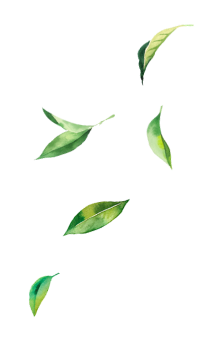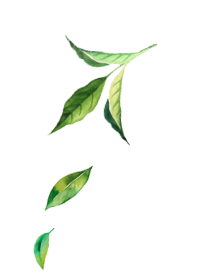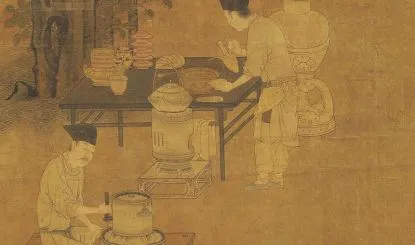




Perspectives on Tea Drinking in the Song Dynasty
During the Tang Dynasty, a refined era of tea culture blossomed, blending traditional practices with innovative elements. The subsequent Song Dynasty further cultivated this sophistication, notably advancing the elegant art of “pointing tea” (Dian Cha). This practice involved the intricate ritual of blending tea in a bowl, which became a hallmark of the era. From the reign of Emperor Zhao Kuangyin in the Northern Song Dynasty to the abolition of the tea monopoly system during the twenty-fourth year of Emperor Hongwu's reign in the Ming Dynasty, this tea culture flourished in China for four hundred and twenty-six years.

By/ Liu, Han-Chieh, founder of Chun Shui Tea Group
Tea boiled in a kettle and tea blended in a bowl, although both end up as cakes, have significantly different manufacturing processes. During the Tang Dynasty, after steaming the raw leaves, they were compressed into blocks or cakes, then dried and stored wrapped in bamboo leaves for future use.
During the Song Dynasty, the process of tea production underwent meticulous steps. First, the raw tea leaves were carefully harvested and graded. They were then steamed until partially cooked, followed by squeezing out the moisture to form a tea paste, akin to making rice cakes by grinding rice and extracting water. This paste was then molded into cakes and dried over fire for five to six days. The entire process, from raw leaves to finished cakes, spanned at least ten days. With the royal family's growing interest in tea, further innovations emerged in tea production. Regulations were imposed, such as requiring tea makers to grow long fingernails to prevent hand contamination, and the addition of various fragrances to the tea cakes. Silver molds were also introduced to imprint designs on the cakes. Careful attention was also given to packaging (wrapping the tea cakes first in bamboo leaves, then in silk, and finally sealing them in lacquered boxes, which were further wrapped in finely woven bamboo baskets), and the cakes were swiftly transported to the capital.
The production of tea cakes involves squeezing and grinding the tea leaves, breaking down their cell structure. Consequently, when it comes to consuming tea cakes, they are no longer brewed in the traditional manner but instead steeped in hot water. This signifies a notable reform in the method of tea consumption. The production and consumption of tea cakes stand in contrast to brewing loose leaf tea. However, whether in the royal court or among the common people, the method of consuming tea cakes remains generally similar.
The process typically involves several steps: first, preparing the tea and boiling water; then, pouring the water and steeping the tea. The subsequent step involves dividing and preparing the tea, which is more intricate, requiring roasting, grinding finely, and sieving. It's crucial to monitor the water temperature during boiling, ensuring it remains below boiling point. When pouring water, it must be done slowly, steadily, and forcefully. Steeping the tea demands precision, achieving a balanced proportion. When serving the tea, it is poured into dark-colored bowls to accentuate the white foam. From the emperor to the common people, a profound passion for the art of tea existed. Tea banquets were commonplace in the palace, where ministers and even the emperor shared their expertise. Specialized books authored by tea-making ministers delved into the subject in detail.
During this dynasty, tea houses were plentiful across the nation, exuding an air of remarkable elegance. The period also witnessed the rise of five major renowned kilns specializing in ceramic ware production. These kilns crafted precious tea utensils of exceptional quality, treasured and passed down through generations.
The literati not only enjoyed drinking tea but also elevated it to a realm of self-understanding, serving as a spiritual refuge rather than just a means of relieving worries or fatigue.
In the daily lives of market vendors, the popular game was not merely about amusement, but rather a reciprocal exchange: “I'll brew a bowl for you to guess, and you brew a bowl for him to guess”. Meanwhile, for monks, tea drinking was seamlessly integrated into their daily routines, considered as essential as eating. They utilized tea sessions to engage in debates on Buddhist philosophy and resolve uncertainties. The phrase “Chi Cha Qu, literally Let's have tea” (喫茶去) became a koan in the Song Dynasty Zen Buddhism. Monks not only cherished tea but also took charge of its production, processing, and sale, attaining self-sufficiency and reshaping societal perceptions of dependency.
During the Song Dynasty's Chun-Xi era, a Japanese monk named Shoichi journeyed to Mount Tiantai in Zhejiang, China, and upon returning to Japan, he introduced the tea-drinking culture he had experienced, laying the foundation for the Japanese tea ceremony.
In essence, the tea art of the Song Dynasty involved the meticulous preparation of a bowl of evenly foamed green tea. However, the Song people's deep regard for life's spiritual and cultural aspects led to the integration of tea drinking into their daily lives and spirituality, rendering it a remarkable practice. Historical records indicate that tea production was widespread, with sixty-six provinces and two hundred forty counties across China engaged in tea cultivation. Many individuals excelled in various tea-related activities, from boiling water to discerning the sound of boiling water, grinding tea leaves, and brewing tea.
Some even possessed the skill to create intricate images in the tea bowl while pouring hot water. Tea houses of the era offered ground tea in winter and honey tea with snow from the cellar in summer. A renowned establishment named “San Yu San” (三與三的茶館) exemplified this, serving ground tea in winter and honey tea in summer amidst ornate decor, featuring famous paintings, seasonal flowers, and performances by local music bands. Reflecting on this rich tea culture, it becomes apparent that there is still much we can glean and appreciate from their practices.
Expand your listening experience through the “Exploring Tea Culture Podcast”
▾▾▾Listen to the full episode▾▾▾
EP23. The Song Dynasty Part I [Tea Doctor Shares Everything About Tea] The Dynasty that Knows How to Have Fun the Most, Enjoying Every Aspect of Life. - The Song Dynasty Feat. Liu, Han-Chieh (Gan Hou), CEO of Chun Shui Tea Group
Apple:https://reurl.cc/kabKlG
Spotify:https://reurl.cc/OjaKG9
KKbox:https://reurl.cc/0ZbMvk
Google:https://reurl.cc/MymKjX
Soundon:https://reurl.cc/0ZbMWo
MixerBox:https://reurl.cc/9VVLQj
EP25. The Song Dynasty Part II [Tea Doctor Shares Everything About Tea] The Overflowing Romance of Literati Cultivates the Four Arts of Life, Evident in Chun Shui Tang. - The Song Dynasty Feat. Liu, Han-Chieh (Gan Hou), CEO of Chun Shui Tea Group
Apple:https://reurl.cc/Y0ZR4X
Spotify:https://reurl.cc/GKMLDy
KKbox:https://reurl.cc/MynL9L
Google:https://reurl.cc/XmvNZ3
Soundon:https://reurl.cc/GKMLpv
MixerBox:https://reurl.cc/NyzdLe







